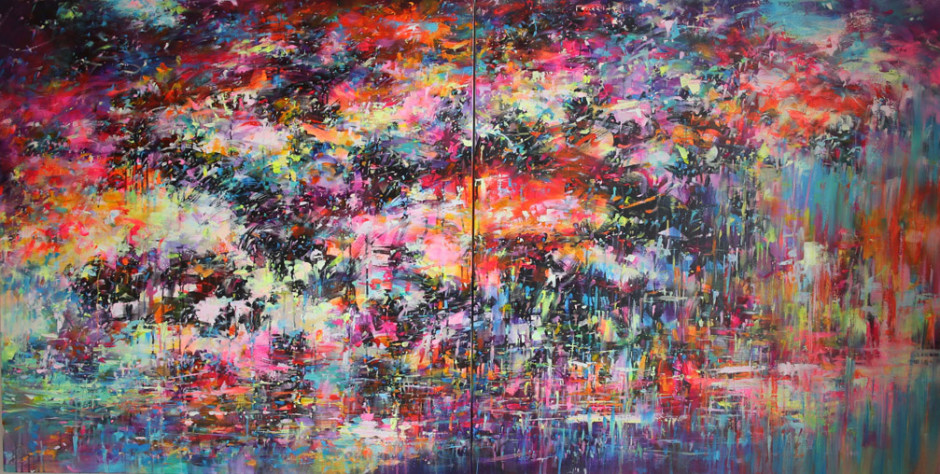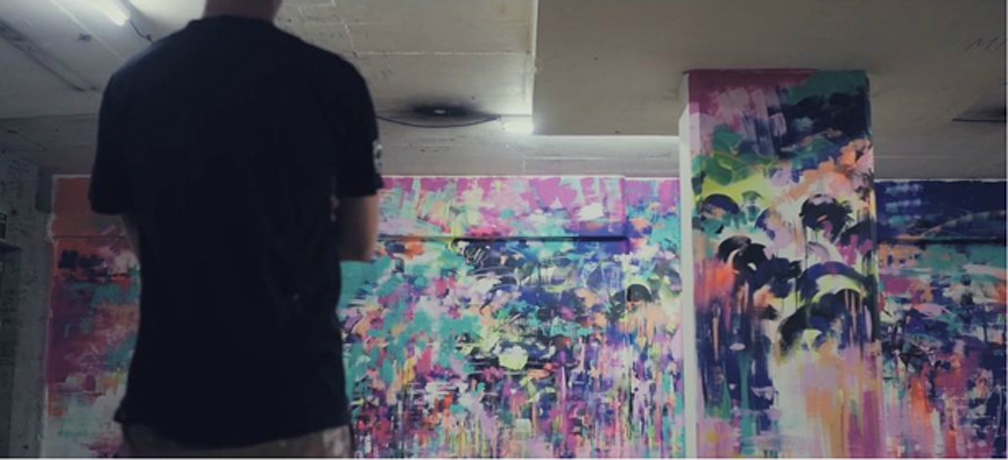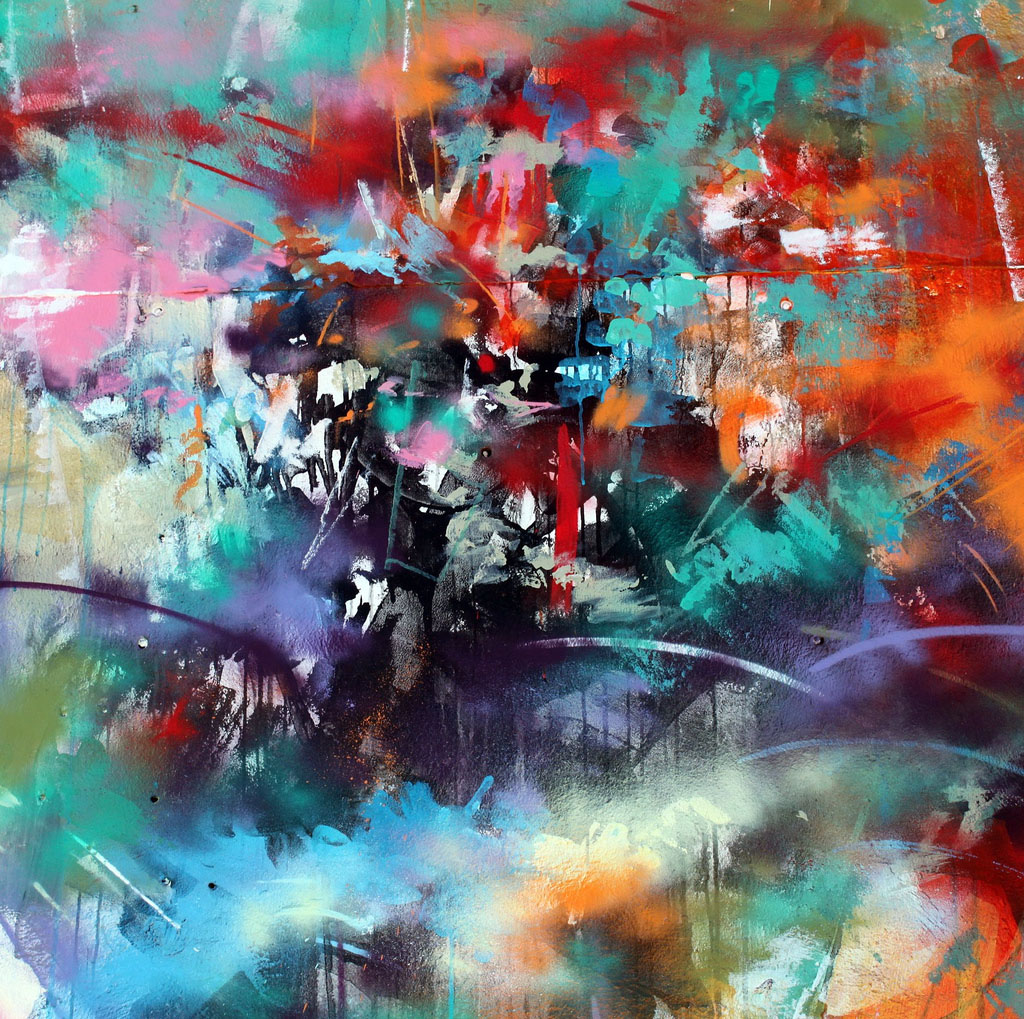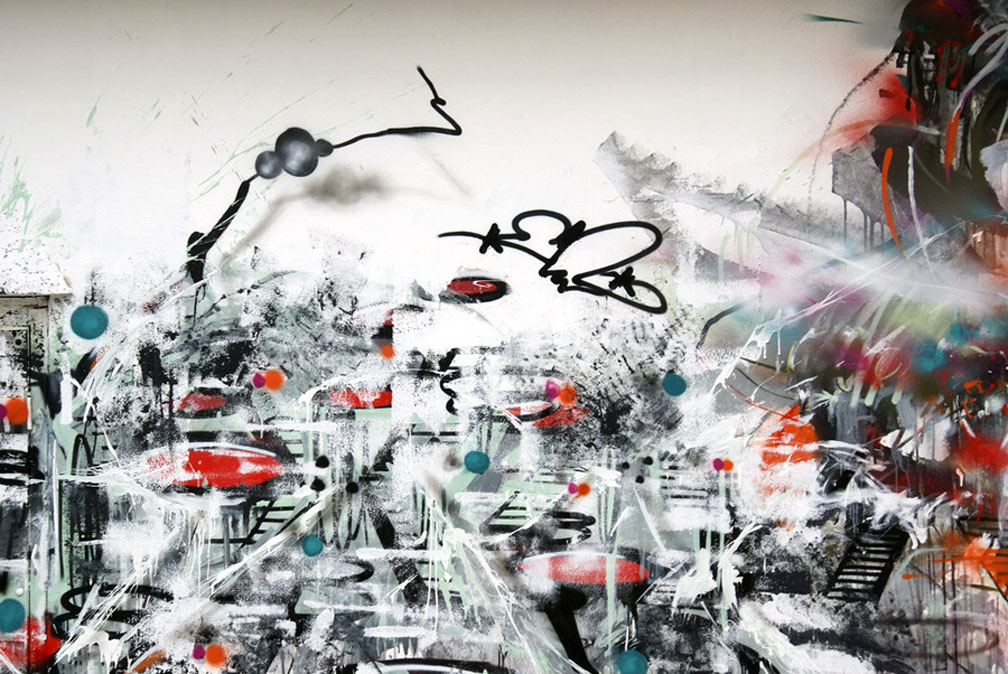THE EVOLUTION OF MR JAGO
Throughout his career Mr Jago has continued to push the boundaries of what constitutes street art, gradually introducing oil and the use of impasto to his work. The evolution of Jago’s work presents an abstract and strikingly modern response to the great tradition of landscape painting. With numerous critically acclaimed exhibitions to his name in London, Paris, New York, Los Angeles and San Francisco, Mr Jago is one of the most internationally recognised and celebrated street artists of his generation.
Always pushing the boundaries of what constitutes street art, Jago’s work has undergone a process of evolution in recent years; the droid like figures of his early works replaced in this new series with an abstract and very modern response to the great tradition of landscape painting.
What inspires your work, outside influences such as life or is it a combination with an internal monologue that informs the work unconsciously?
My work is informed by both external influences and internal drivers and my recent show at Unit London, NIL, was very much representative of the themes that run throughout much of my work.
The word ‘nil’ can signal both a beginning and an end, and the NIL series illustrates my struggle between feelings of crushing pessimism and soaring optimism for what the future holds. The evolution of our species, technology and environment has and continues to bring about incredible things. However, there is a lot that is ugly about where we as a species are heading, as we fail to be good custodians of our planet. My work and the works in NIL are visual depictions of both the beginning and the end that might be around the corner. Will humankind conquer nature and all that is currently destroying it?
My work, NIL included, is my way of processing the internal tensions that derive from external influences. I hope that this lends relevance to my painting, and that other people are worried about the sorts of things that my work is concerned with – the modern world’s vices – and take joy in what my work celebrates – nature’s beauty and wonder.
You use spray paint and acrylic, what made you choose these?
There is a certain immediacy with spray paint and acrylics that works well with my spontaneous style of painting; both mediums allow me to work quickly and fluidly. In the NIL series I have added oil paint to my repertoire, and I’m enjoying the new textures, colours and way of working.
Do you find that without this form of expression (art) that you would struggle within the parameters of daily life?
Anxiety is often a driving force behind my work. There are also obsessive and compulsive drives in my painting. I paint because I have to.
When creating the works, do you feel as if there is a conflict going on between what you are trying to create and the tools and means you use to form them?
I wouldn’t say that there is conflict between my tools and what I am trying to create but my work is certainly, as I’ve described above, the output of my own internal tensions. My work, especially my current show, NIL, is both fantasy and nightmare. My paintings illustrate simultaneous wonder at, and fear of what will be next. It would be inaccurate, however, to characterise my work as something born solely out of conflict. There is also a lot of rawness and emotion in my abstract pieces. I thrive on the excitement of what happens when an image dissolves into abstraction.
Coming from a background in street art and board culture, how relevant do you find the context behind the work and yourself helps to inform the viewer of the work?
I am often described as a street artist. I use spray paint, have painted walls, and have also collaborated with board brands and therefore have a certain affiliation with that scene. However, I’m not sure that either of those contexts really informs the viewer’s understanding of my work, because quite simply I’m a painter.
For upcoming artists how important do you define the need to emphasise the dedication and ongoing development of art practice for those just starting up?
Whatever the stage of an artist’s career it is important to first cultivate your own style and second, to continue challenging yourself. From a young age, I was a sketch book addict; I was obsessed with comic books and early graffiti characters and much of my early sketching was pure copy work.
I went on to study illustration at university and hoped that those studies would inform my own style. Instead, my tutors taught me that success as a commercial illustrator could only be achieved by being a good mimic. Fortunately, I didn’t let that experience deter me from my efforts to develop my own aesthetic and as a result, I earned commercial success through experimentation rather than adherence to a brief. That success gave me the confidence to work in a looser style and to begin to paint.
My transition from illustrator to painter also saw the robotic figures that defined my early aesthetic engulfed in abstracted environments. My recent exhibition, NIL, illustrates a further development in my work with the introduction of oil paint. It has been a pleasure to work with a gallery that encourages ongoing growth and my advice to upcoming artists would be to surround yourselves with galleries, clients and peers who encourage you to take risks.
I often find that colour is reflective of an internal perhaps even innate monologue which is subconsciously being fed into the work. How important would you say colour is in reflection of the meaning behind your work?
My choice of colour for any body of work is not always deliberate, although there is certain serendipity that the colours that work for me and for my style of painting also lend themselves to the sorts of themes that recur throughout my work. The palette used in NIL is like a haze that hangs over the horizon, like the luminescence of oil on water, and like the murk of a chemical stew. Equally, the colours in NIL are like a glorious sunset or the bloom of spring flowers on a barren landscape. I’d like to think that the palette used in the exhibition pieces effectively translates the conceptual tensions within this body of work.










